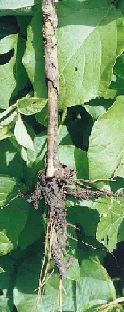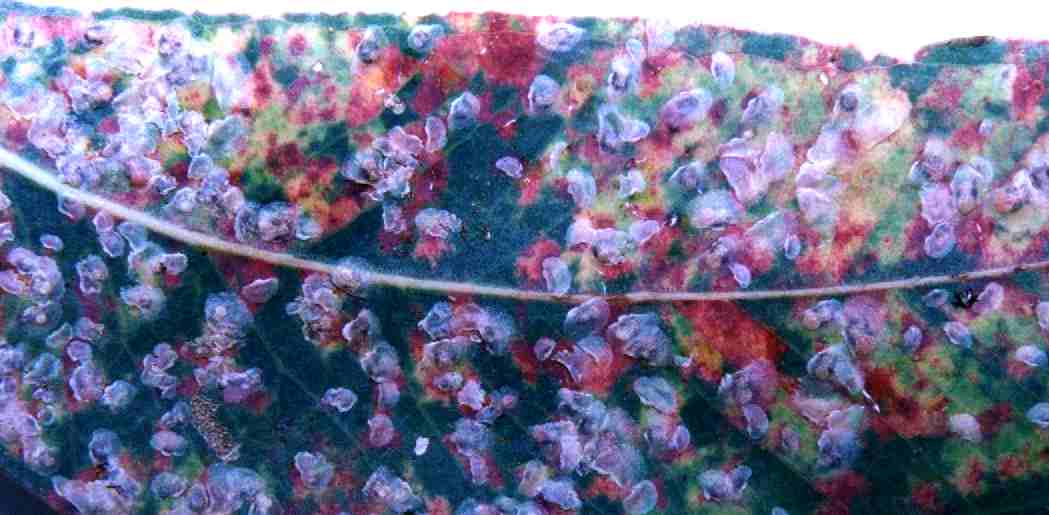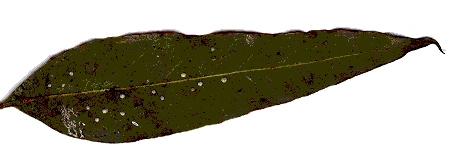- leaves are more or less densely covered with purple or brown blotches and translucent, shell-like lerps
- infested tree can be completely defoliated and eventually dies
Lace or Basket Lerp Cardiaspina spp. (Psyllidae)
- leaves are covered with white fibrous lerps that more or less defoliate the host
- leaves often stained with black sooty mould growing on honey dew
Glycaspis spp. (Psyllidae)
- skeletonized leaves with brown or dark yellow spots
- defoliation of the host
- conical larval cases or bags of less than one centimetre length attached to leaves
- pupae in shelter attached to leaves by thick silken thread
Case Moth Hyalarcta spp. (Psychidae)
- young seedlings in the nursery completely defoliated, bent or cut off right above the soil
- damage occurs mostly during night
- stem of seedling debarked or ringbarked at the base
Seedlings either damaged by cutworms (Noctuidae) or by grasshoppers (Orthoptera)

- leaves of terminal branches of younger trees trimmed by larval beetles
- defoliation of tree tops
- crescent-shaped feeding notches on leaves of the lower crown made by adult beetles
Eucalypt Leaf Beetle Paropsis spp. (Chrysomelidae)
(reprod. by permission of CSIRO Australia)
- fine, powder-like dust on the bark beneath the bore holes
- cross section shows boreholes that are radially arranged
- infestation occurs mainly after fire
Xylothrips religiosus Boisduval and other powder-post beetles (Bostrichidae and Anobiidae)

